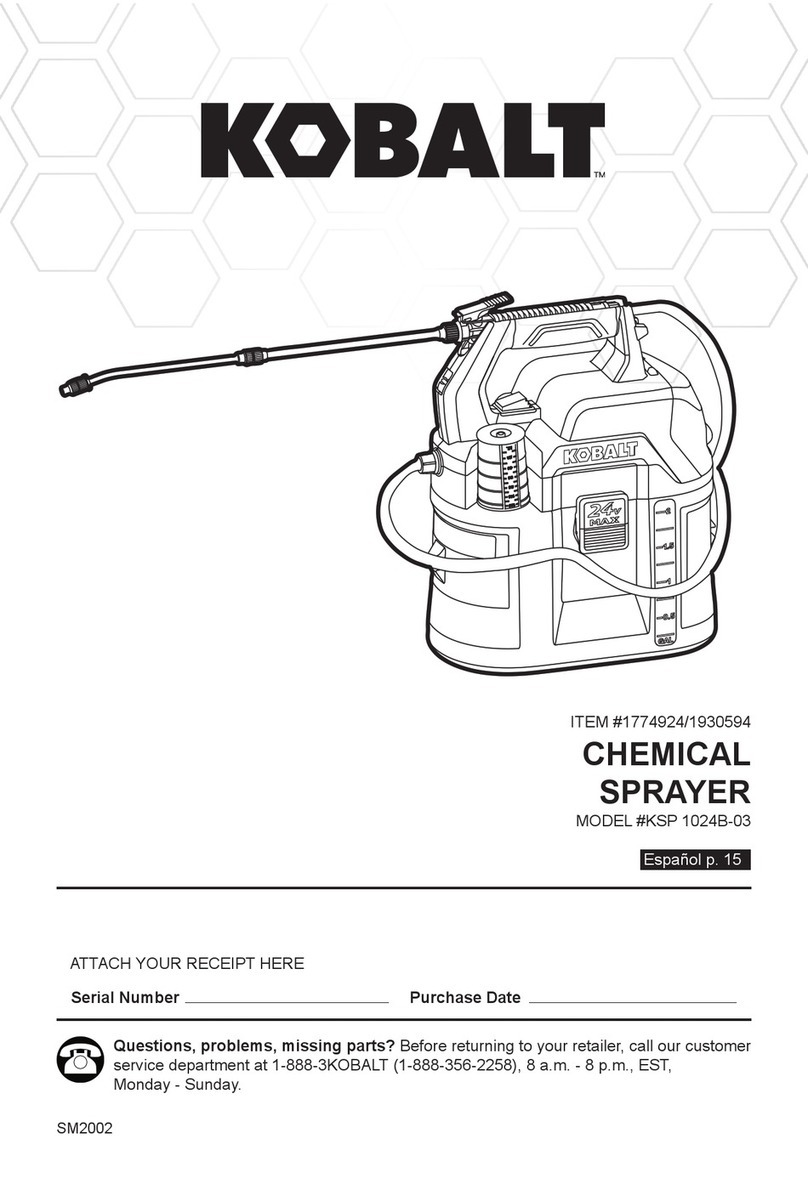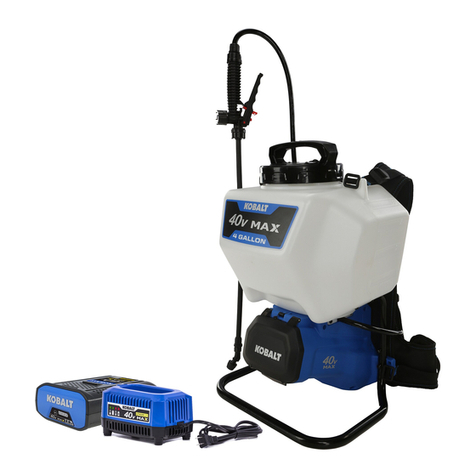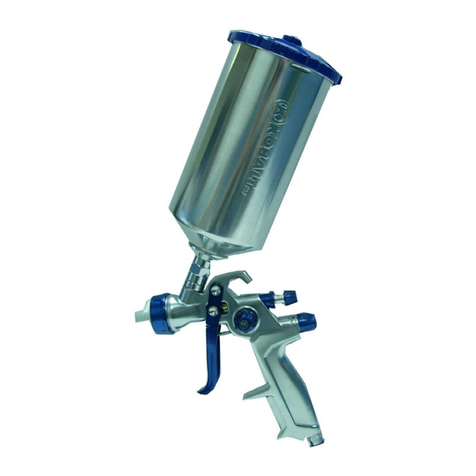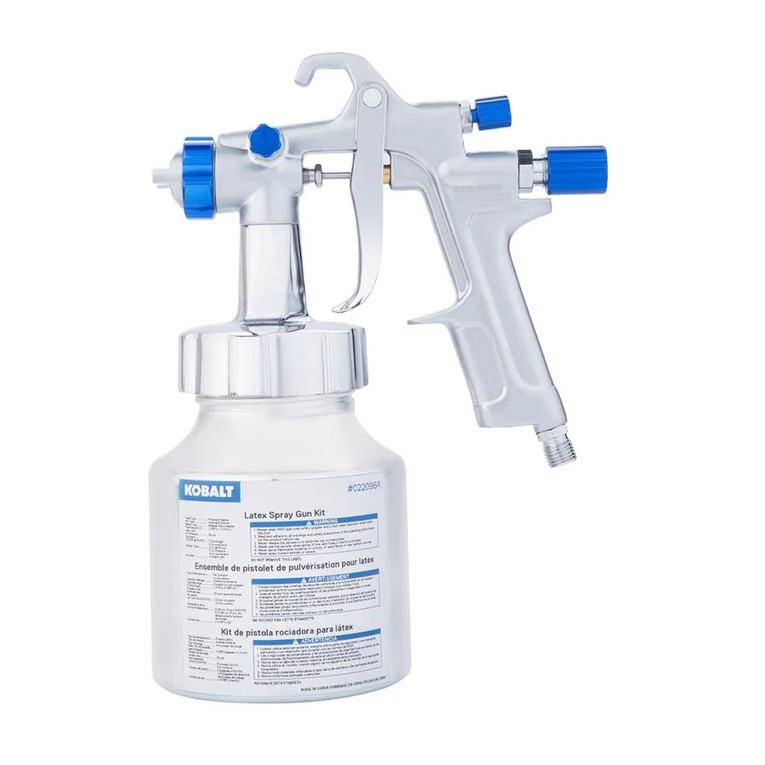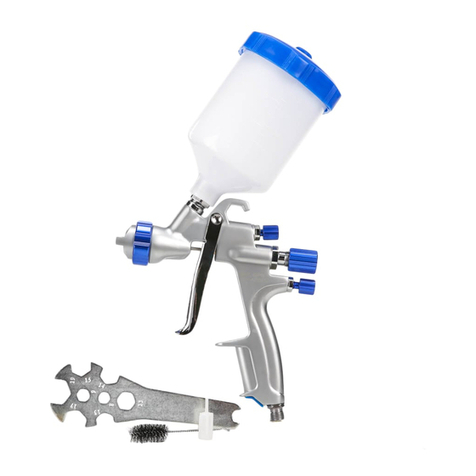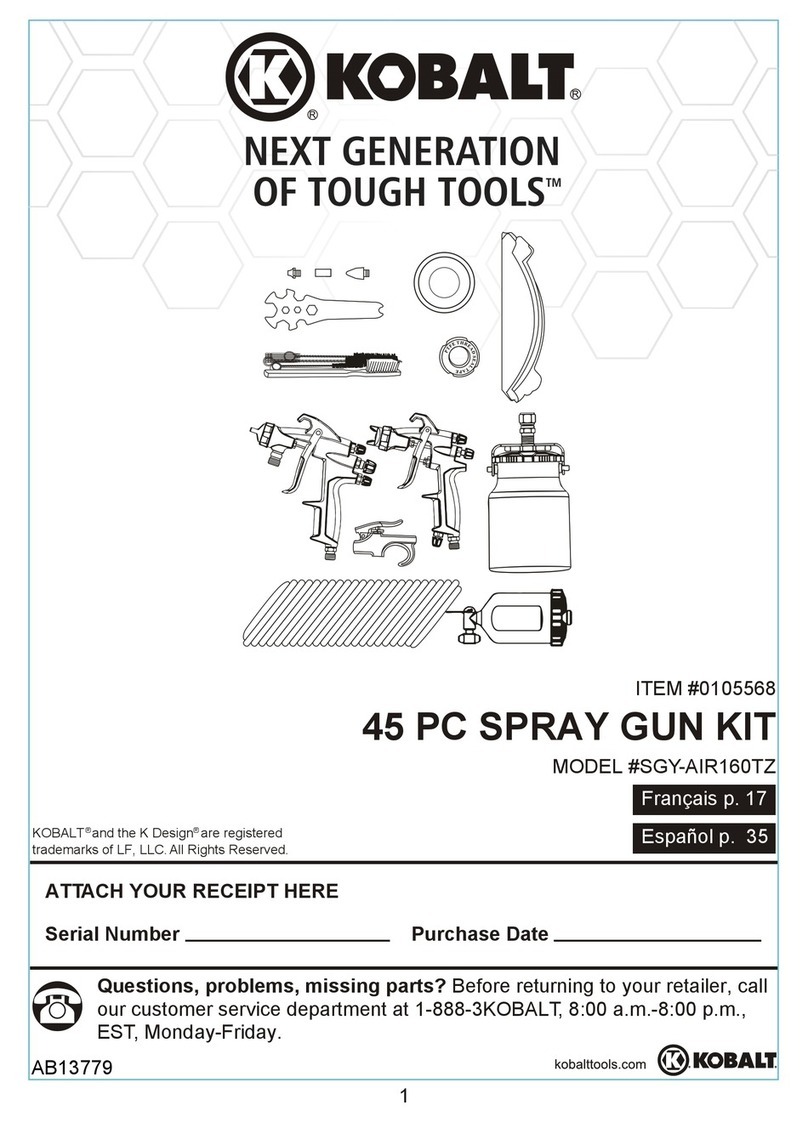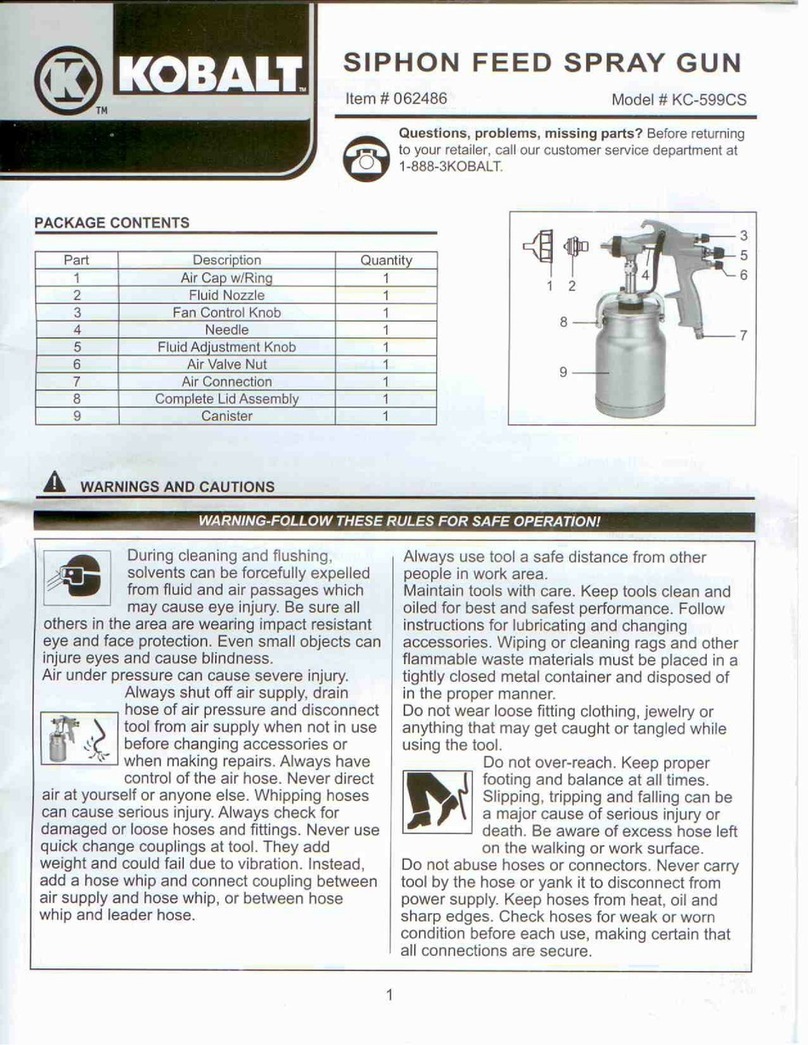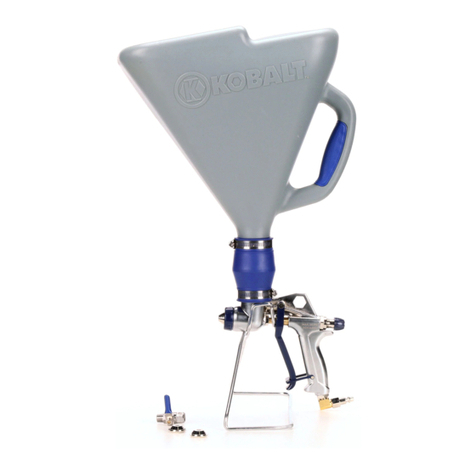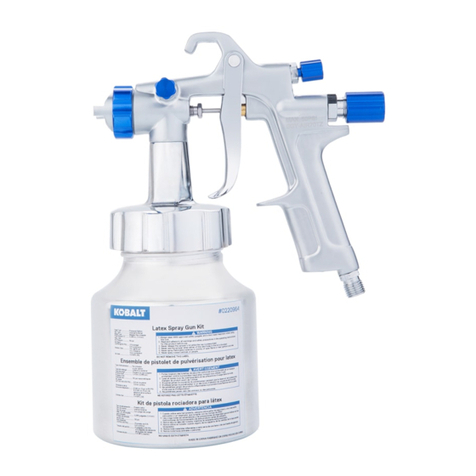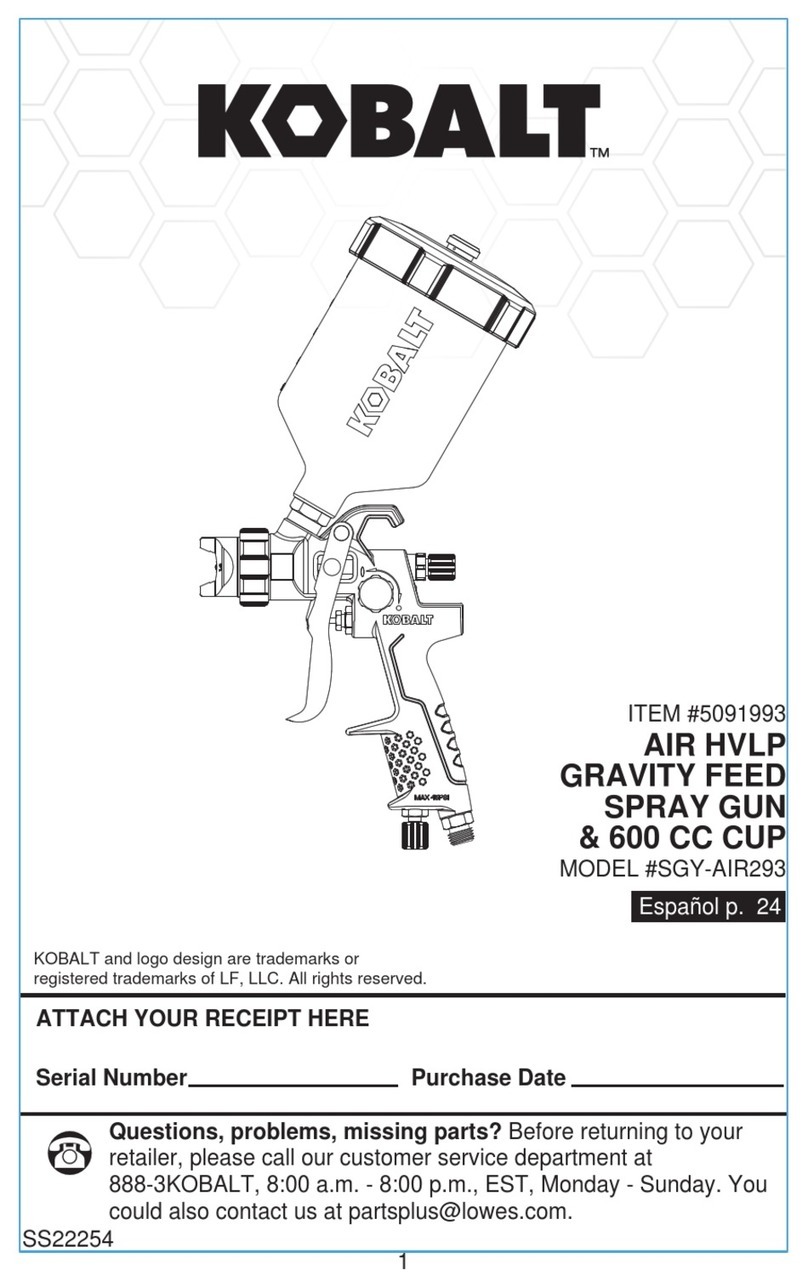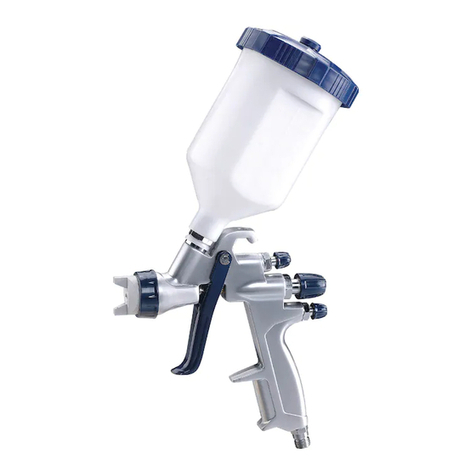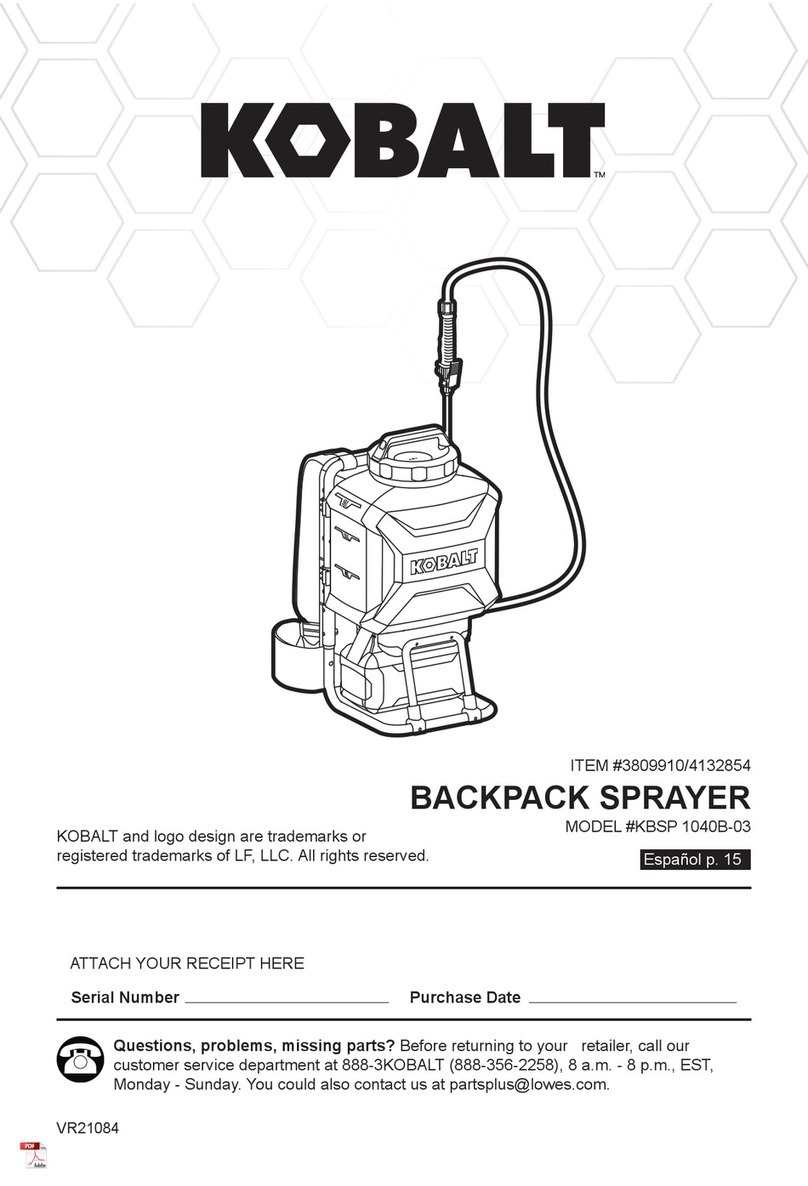10
CARE AND MAINTENANCE
To properly maintain and keep your small gravity feed sprayer working at its optimal performance,
it is recommended that the spray gun nozzle be cleaned and cleared of any clogs or debris buildup
using paint thinner, or lacquer thinner. DO NOT USE ANY ACID BASED SOLVENTS, AS ACID
BASED SOLVENTS CAN DAMAGE THE SPRAYER. Please consult with your local Lowes
retailer in choosing the right solvent materials.
15
14
1. Pour enough solvent material(s) into container so that nozzle will be completely submerge in
solvent material
NOTE: There are two methods for properly submerging spray gun nozzle into cleaning solvent
material(s). The manufacturer recommends method 1:
Nozzle
Nozzle
Solvent material
Solvent
material
Method 2: Keeping the Spray gun nozzle attached to the spray gun
housing, submerge the front end of the spray gun only (See Fig. 15).
Make sure that only the spray gun nozzle is submerged in solvent
material(s). IF USING METHOD 2, AND NOT COMPLETELY
REMOVING SPRAY GUN NOZZLE, MAKE SURE A SUITALBLE
CONTAINER IS USED WHICH CAN NOT EASILY TIP OVER. IF
THE CONTAINER USED DOES TIP OVER, YOU WILL SPIL
SOLVENT MATERAIL(S), CAUSING A POTENTIAL SAFETY HAZZARD.
NOTE: Make sure that you never submerge any part of the spray gun
housing into solvent material(s), as air passages would become clogged
with dirty solvent. This would also cause the lubricant in the leather
packaging, and other gaskets inside the gun housing to dry out,
resulting in difficult operation and faster wear on the item which will cause poor spray performance.
2. Let nozzle sit in solvent material(s) for 3-5 minutes allowing solvent material(s) to break up any
build up of dirt and or debris on spray nozzle.
3. Remove nozzle from solvent material(s) and closely inspect the spray gun nozzle to ensure any
dirt or debris build up has been cleared.
NOTE: Depending on the paint and solvent material(s) used, steps 1-4 may need to be repeated
multiple times.
BEFORE PERFORMING ANY CLEANING OR MAINTENANCE REMOVE SPRAY GUN FROM
AIR SUPPLY AND KEEP AWAY FROM ANY INGITION SOURCES.
Method 1: Remove the spray gun nozzle completely from spray gun
and place into a container that will not cause solvent derogation when
solvent material(s) are added (See Fig. 14).
4. If debris or build up is still present use a non wire soft bristle brush and brush area of nozzle
that still contains dirt or debris, and repeat steps 1-4.
5. Once spray gun nozzle has been completely cleared of any dirt or debris, and is clean, wipe
nozzle clean with a clean cloth or rag.
6. Once nozzle has been properly cleaned reconnect nozzle to spray gun, and reconnect spray
gun to air supply, and test sprayer ensuing that sprayer is working properly. If you are at the
end of a project, when test spraying make sure you do not test spray having paint go through
the system as this will require you to begin the cleaning process again.
7. Once sprayer is working properly, make sure you follow the solvent manufactures
recommendations for properly discarding any dirty cloths, or rags that were used in the
cleaning process.
Storing
1. When not using spray gun, turn the fluid adjustment knob counterclockwise to open
which will reduce spring tension on needle fluid tip.
2. Spray gun must be well cleaned and lightly lubricated.
3. Store spray gun in a dry and safe place out of reach of children.
